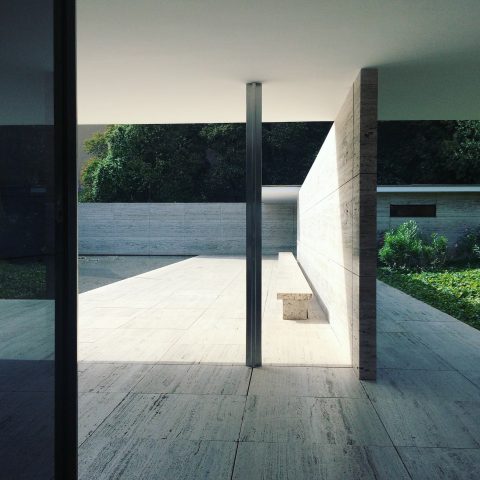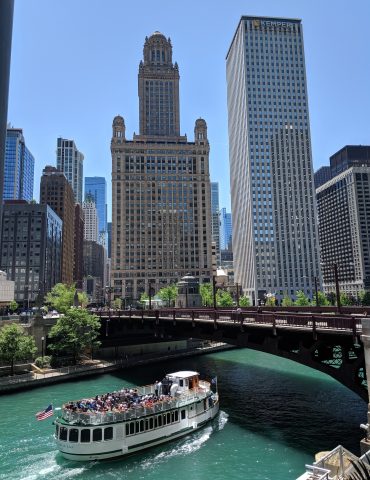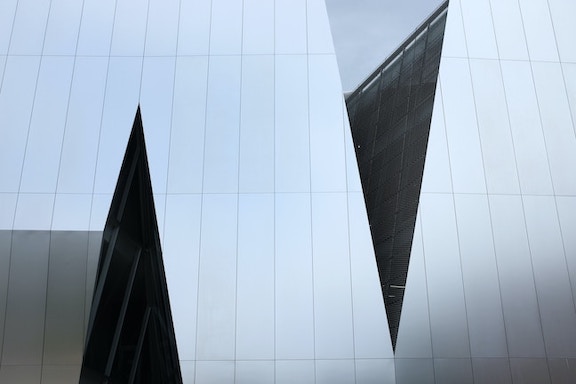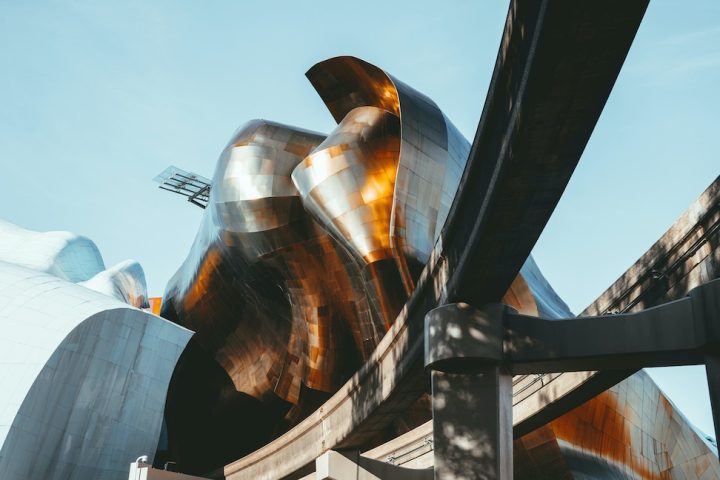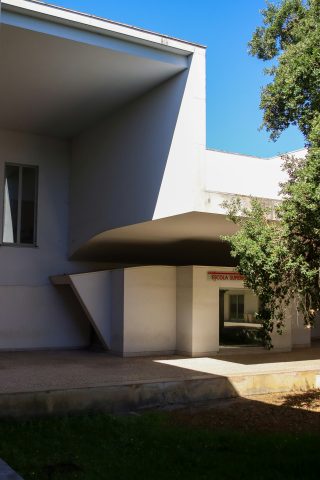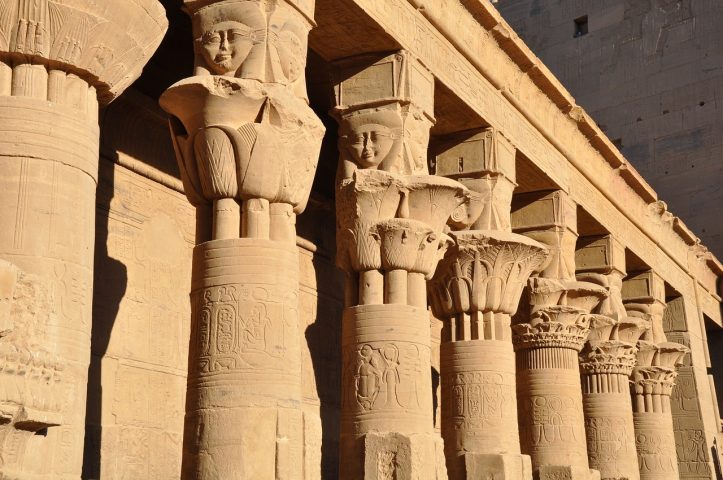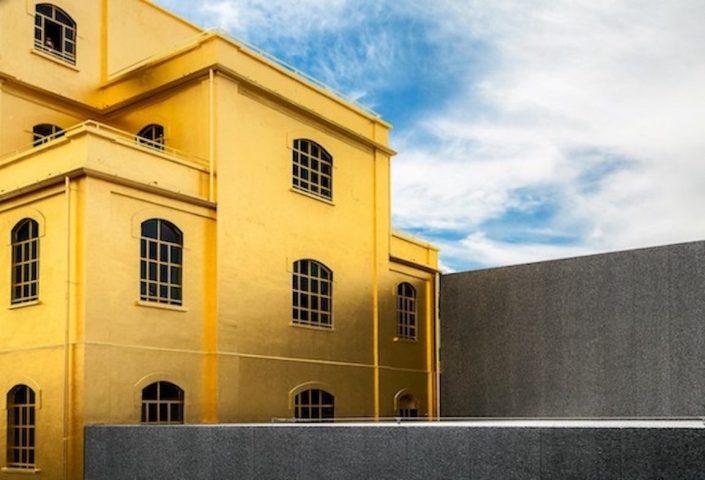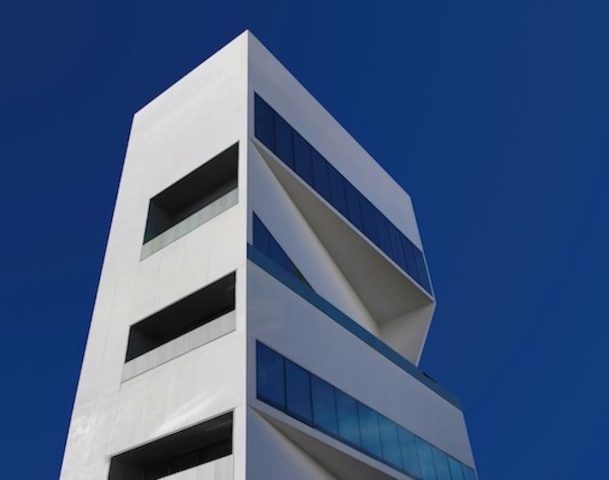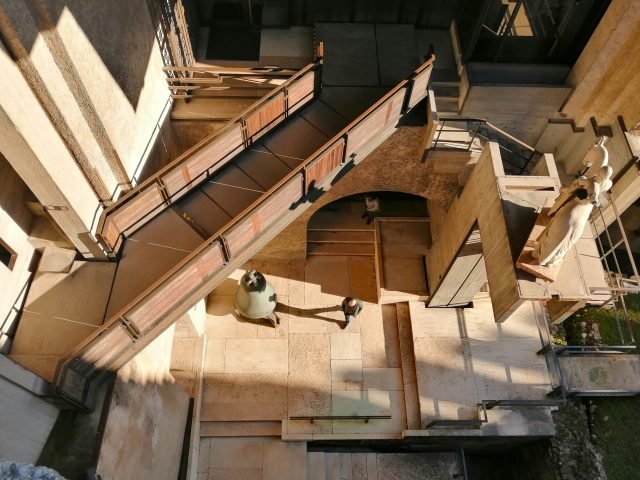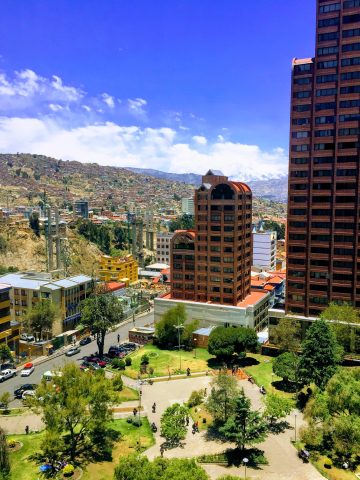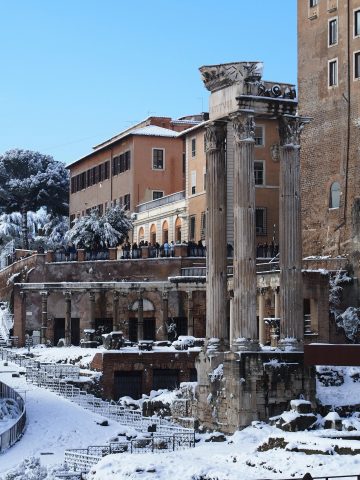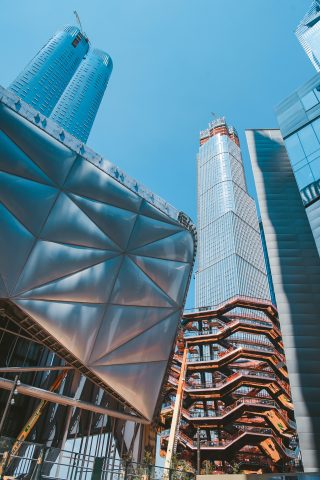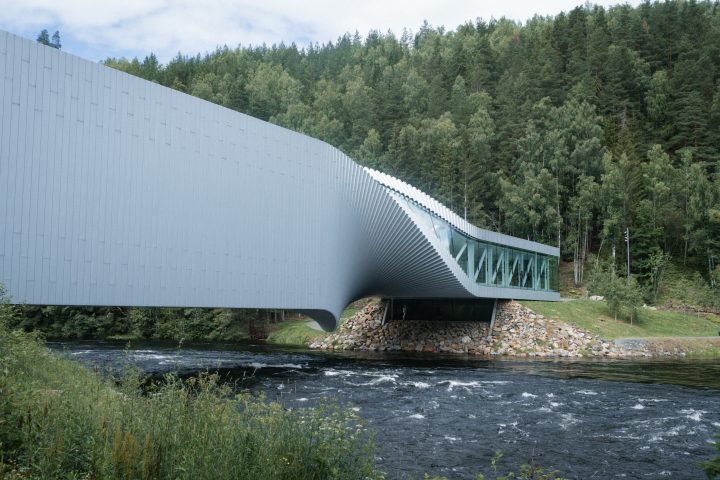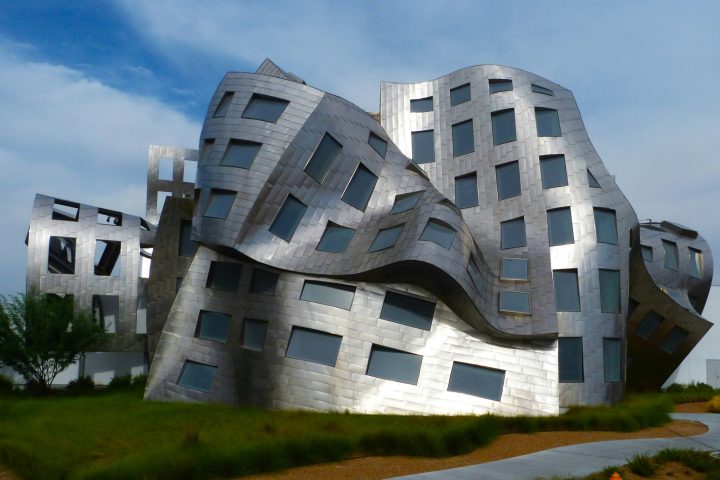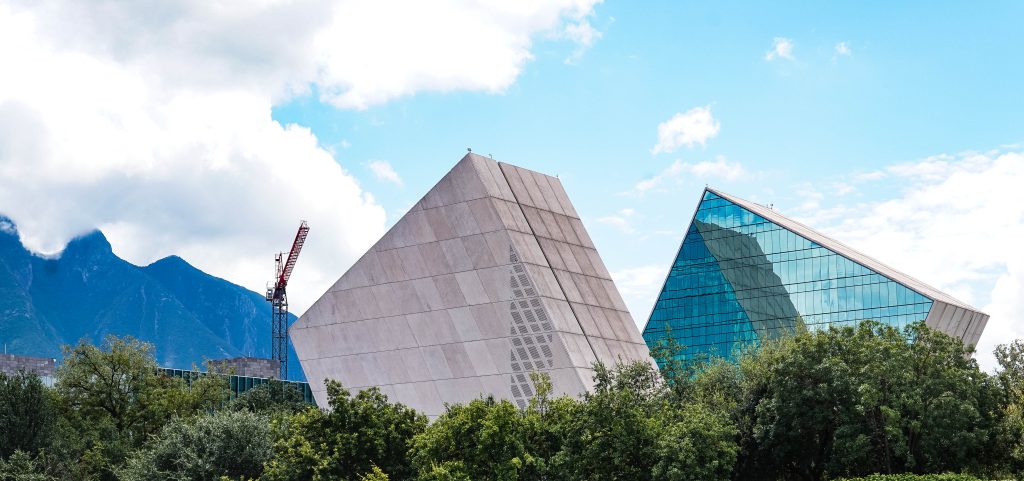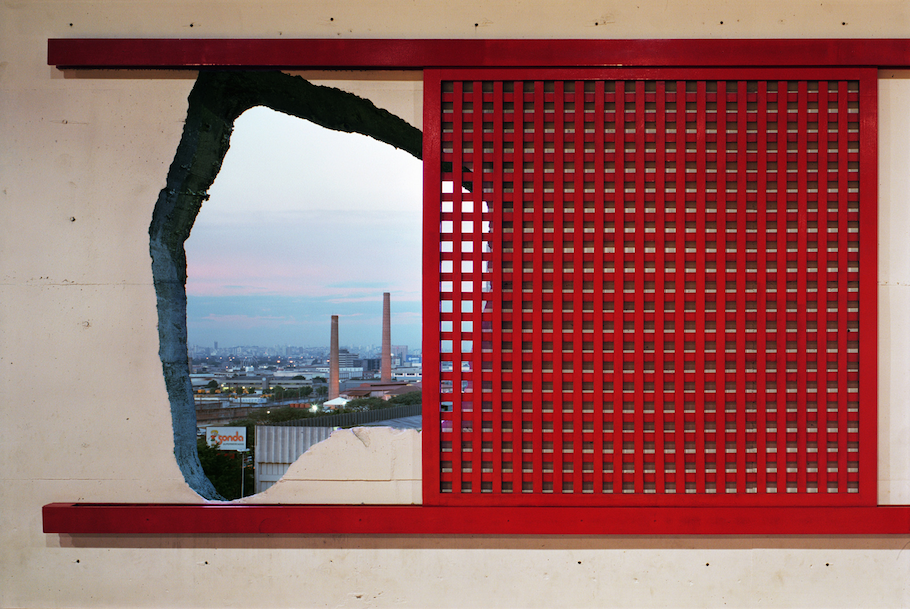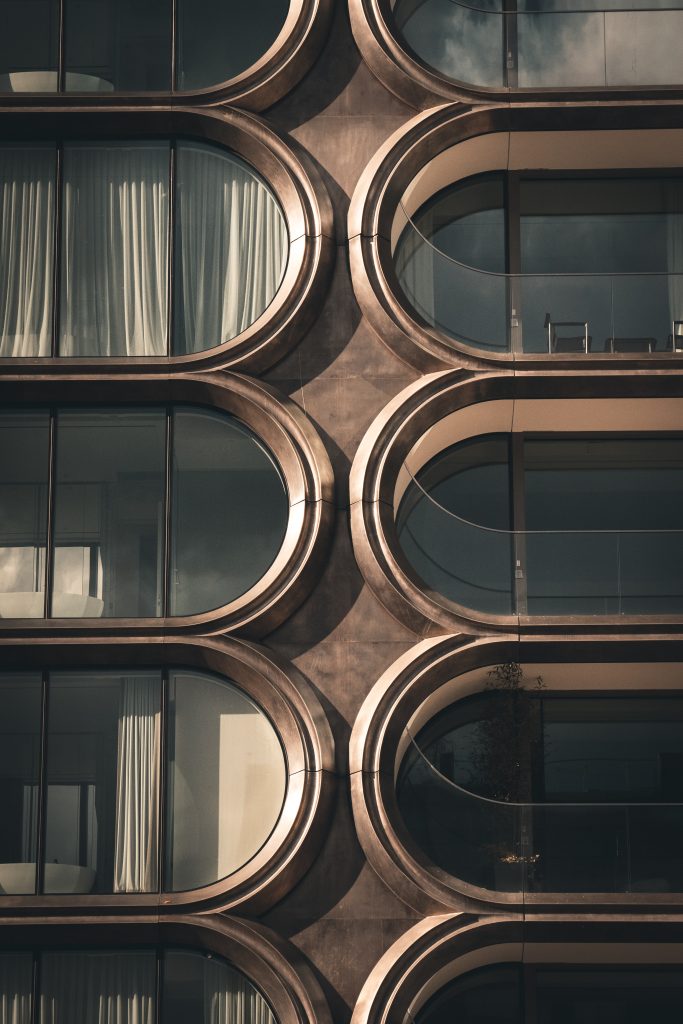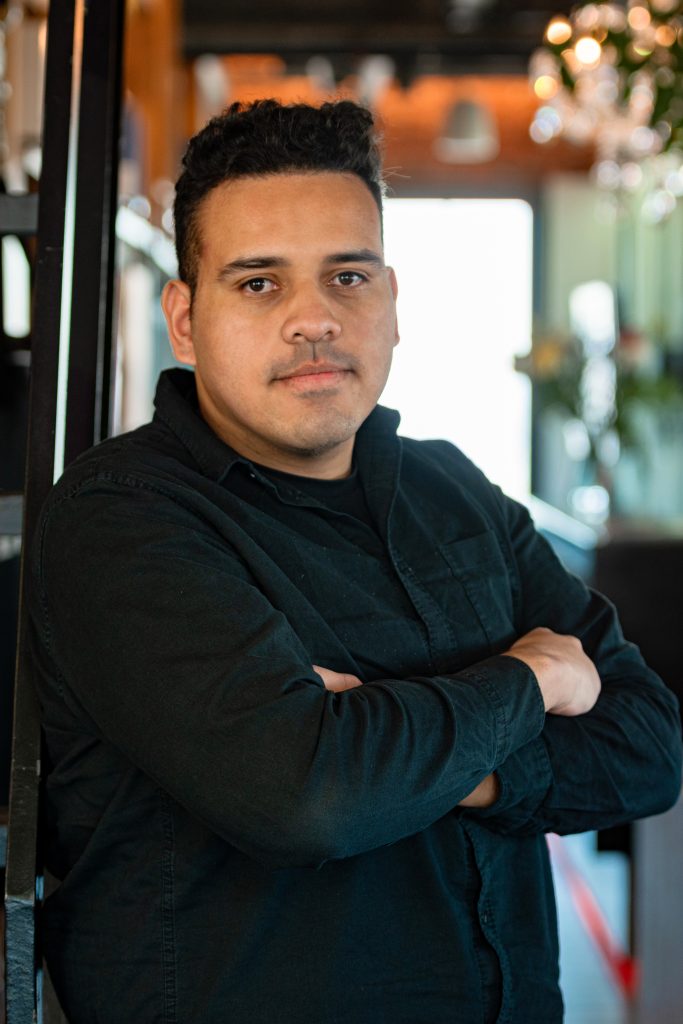
WHAT’S YOUR NAME?
Chris Mancia
WHAT MOTIVATED YOU TO CHOOSE THE FIELD OF ARCHITECTURE?
Architecture has been a passion of mine since I was a child. Growing up in Brooklyn and seeing the changes in building types and styles from neighborhood to neighborhood allowed me to recognize the opportunity for creativity in Architecture.
WHAT TYPE OF WORK ARE YOU MOST INTERESTED IN?
Mixed-Use Residential / Commercial. I believe it is a balance between the streetscape and housing needs in the city.
WHAT HAVE BEEN YOUR BIGGEST CHALLENGES SINCE OBTAINING YOUR ARCHITECTURE DEGREE?
Finding the opportunity to complete thorough investigations into materials and building science.
WHAT DID YOU LIKE ABOUT ARCHITECTURE SCHOOL?
Architecture school allows you to find a balance between the theoretical and practical. It forces you to analyze each situation and come up with the best solution, while allowing you to place your own design language at the forefront.
ANY CRITICISMS OF THE ARCHITECTURE EDUCATION EXPERIENCE?
I believe in Architecture school, there should be more collaboration with Engineers, Interior and Industrial Designers, when a student graduates it is often their first experience working with the other fields.
WHAT ARE YOUR PROFESSIONAL GOALS?
I wish to obtain my license and begin my own practice here in New York, working on both local and international projects.
WHO DO YOU CONSIDER TO BE SOME OF YOUR FAVORITE ARCHITECTS?
Mies Van der Rohe, Renzo Piano and Rem Koolhaas.
DO YOU HAVE A FAVORITE BUILDING OR CITY?
Copenhagen, visiting last year allowed me to get a better sense of the connection between public space, infrastructure and personal well-being.
WHAT DO YOU HOPE TO GET OUT OF YOUR AIA BROOKLYN CHAPTER MEMBERSHIP?
I hope to be connected with and learn from Architects in my community while also using the organization lectures and meetings to educate myself about the field.
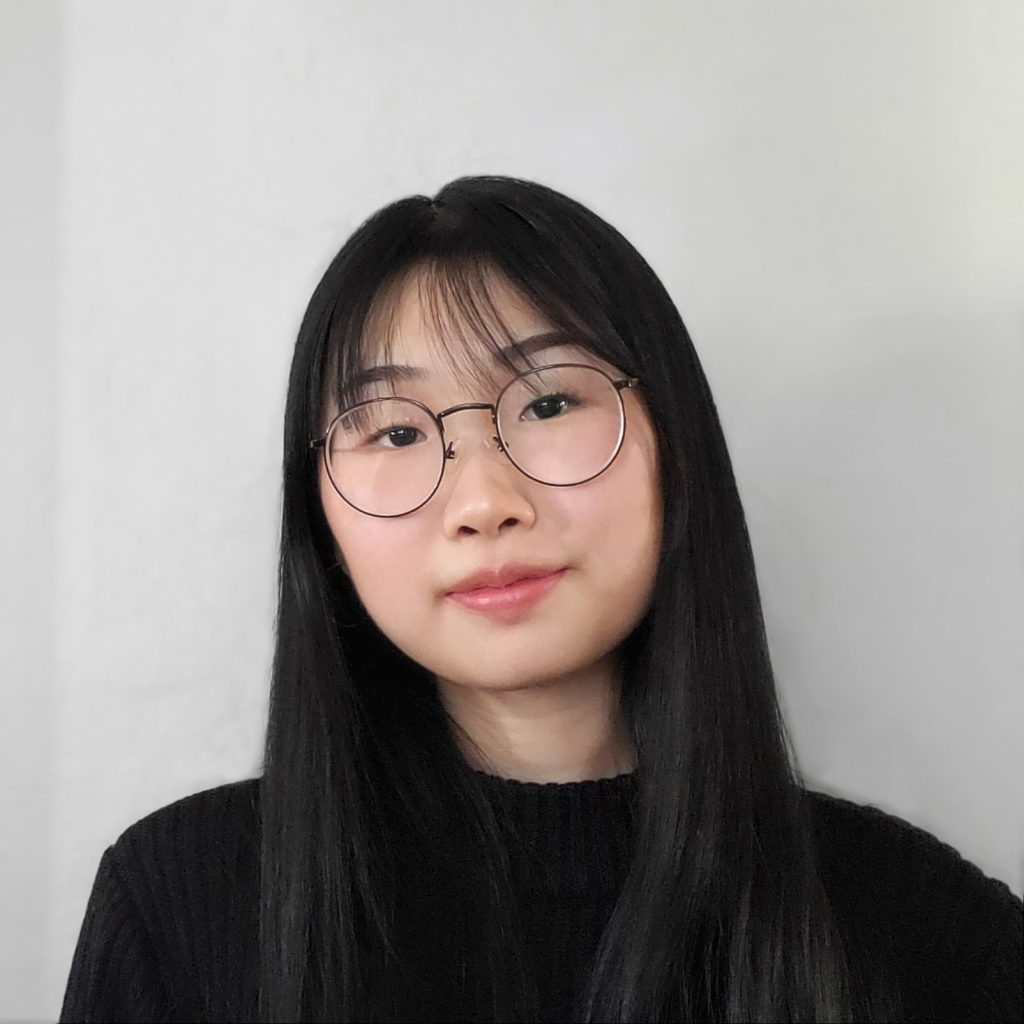
WHAT’S YOUR NAME?
Lisa Liang
WHAT MOTIVATED YOU TO CHOOSE THE FIELD OF ARCHITECTURE?
Honestly, I felt like architecture chose me more than I chose the profession. I grew up in NYC surrounded by amazing architecture and being naturally creative, detail-oriented, and organized, it felt like the obvious choice. Once I fell into it, I couldn’t think of anything else that I would rather do.
WHAT TYPE OF WORK ARE YOU MOST INTERESTED IN?
I’ve always been drawn to residential architecture and interior design. I’d love to scratch that itch early on in my career and I’d love to work on cultural and public projects at some point as well.
WHAT HAVE BEEN YOUR BIGGEST CHALLENGES SINCE OBTAINING YOUR ARCHITECTURE DEGREE?
Besides student loans and intense burnout from architecture school, the realities of the profession definitely hit me once I graduated. I found it much more difficult to find employment in NYC as opposed to elsewhere. The profession is undervalued and underpaid and I really have to advocate for myself. It’s been a challenge to not feel discouraged while pursuing my career in architecture.
WHAT DID YOU LIKE ABOUT ARCHITECTURE SCHOOL?
Architecture school challenged me in so many ways I didn’t think was possible. I learned a lot about architecture, but most importantly, I learned a lot about myself. I enjoyed being able to exercise the creative part of me, solving unique problems, and it was really rewarding to see how far my project came along after countless iterations. I also appreciated the sense of community and belonging that can only come about after the shared experience of long hours and sleepless nights.
ANY CRITICISMS OF THE ARCHITECTURE EDUCATION EXPERIENCE?
I wish architecture school better prepared me more for entering the workforce. There is a strong emphasis on learning how to think and design, but when I graduated, I felt like I knew a lot, but also nothing at the same time. It wasn’t even until my last semester of graduate school that I designed a house and took a course in Revit. Sure, internships were helpful, but the last thing I wanted to do after spending 50 hours at school, is more architecture work.
WHAT ARE YOUR PROFESSIONAL GOALS?
In the near future, getting my license would be one. Finding work-life balance while doing meaningful work is also important to me. Beyond that, I’d love to find my niche and become an expert in that. Maybe I’ll start my own business, who really knows?
WHO DO YOU CONSIDER TO BE SOME OF YOUR FAVORITE ARCHITECTS?
Frank Lloyd Wright and Kazuyo Sejima.
DO YOU HAVE A FAVORITE BUILDING OR CITY?
I can’t say that I have a favorite building, but as for city, I’d say New York City is pretty up there. I love Chicago and Seattle as well.
WHAT DO YOU HOPE TO GET OUT OF YOUR AIA BROOKLYN CHAPTER MEMBERSHIP?
I’m hoping to get more involved in the architecture community and meet more like-minded professionals who have been in my shoes at one point.
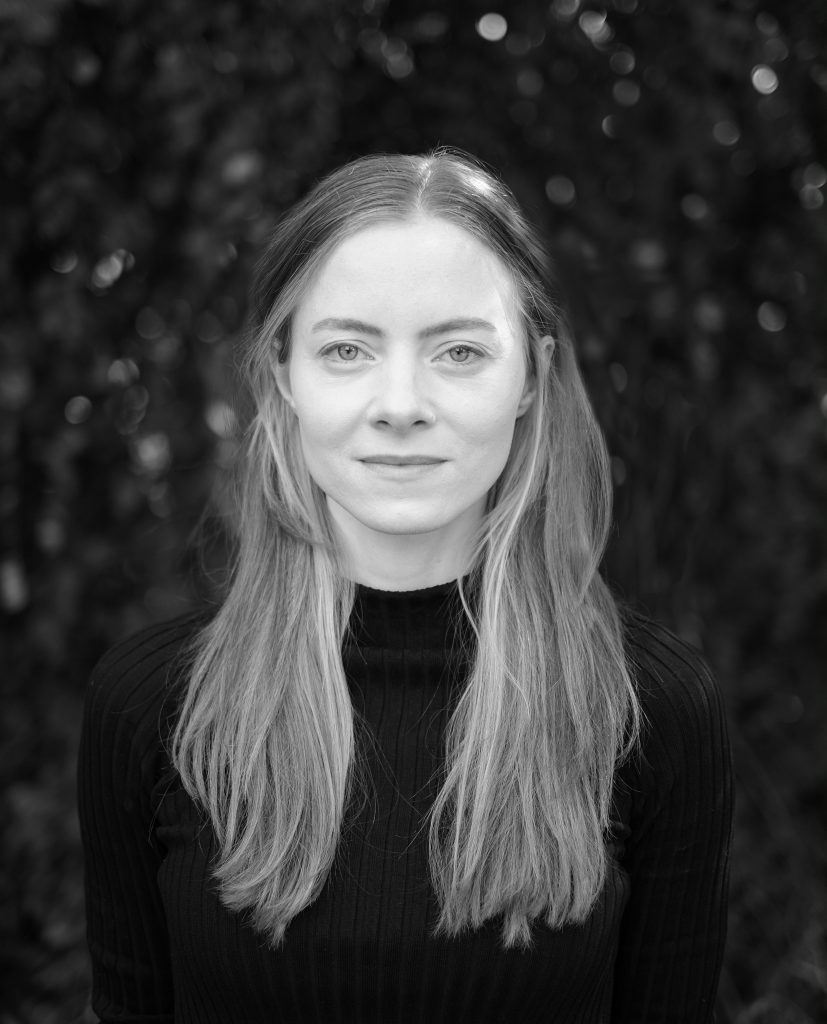
WHAT’S YOUR NAME?
Marie Stargala
WHAT MOTIVATED YOU TO CHOOSE THE FIELD OF ARCHITECTURE?
Initially, design as a broad category spoke to my interests in the composition of form, color, material, textures, etc. Later, I was drawn to architecture specifically because I saw that thoughtfully designed spaces could have such a big impact on someone’s life.
WHAT TYPE OF WORK ARE YOU MOST INTERESTED IN?
I am interested in work that is ecologically and socially responsible, work that considers longevity as part of its mission, and work that is interested in exploring an aesthetic expression that is specific to its temporality, its site, its materiality, and its construction.
WHAT HAVE BEEN YOUR BIGGEST CHALLENGES SINCE OBTAINING YOUR ARCHITECTURE DEGREE?
Starting my design practice, and finding clients that are interested in questioning convention.
WHAT DID YOU LIKE ABOUT ARCHITECTURE SCHOOL?
It was great to have the space to think, to explore, and to understand concepts/ideas/histories/aesthetics in ways I hadn’t before.
ANY CRITICISMS OF THE ARCHITECTURE EDUCATION EXPERIENCE?
In general, I think most architecture schools in the US don’t teach architecture through a study of materiality and construction methodology. I believe craft and materiality should be at the forefront of architectural education as those are the “ingredients” and “methods” of building creation. Just as a cook must understand, as broadly as possible, the ingredients, tools, and techniques available to make great food, the architect must know all the ways a building can come into being. If we don’t know what is possible, we cannot advocate as effectively for buildings which push past convention.
WHAT ARE YOUR PROFESSIONAL GOALS?
I hope to continue to work on projects in my practice, Twenty Three Calvin, which allow me to experiment with construction methodology, and allow me to express formal, material, and textural ideas that I think are of value. I also hope to continue to work on projects that are socially and environmentally responsible. Currently, I’m collaborating on the design of 8 units of affordable housing. It’s so exciting to be working towards a future where there is increased access to considered, high quality housing.
WHO DO YOU CONSIDER TO BE SOME OF YOUR FAVORITE ARCHITECTS?
Herzog & de Meuron, Smiljan Radic, Álvaro Siza, Valerio Olgiati, Günther Vogt, Peter Zumthor, among many others. If we’re talking about deceased architects, it would be a different list. I just realized all the architects I mentioned are male. I hope that changes with time, I’m sure it will.
DO YOU HAVE A FAVORITE BUILDING OR CITY?
No, I wouldn’t say that I have a singular favorite building or a favorite city. But in general, I find myself being drawn to cities which have a relationship to water in a very direct way – Paris, Basel, Berlin, Dresden, Tokyo.
WHAT DO YOU HOPE TO GET OUT OF YOUR AIA BROOKLYN CHAPTER MEMBERSHIP?
I’m excited to meet people through AIA Brooklyn Chapter that I otherwise wouldn’t, and contribute to the ongoing conversation around architecture in New York.

WHAT’S YOUR NAME?
Carlos Arnaiz
WHAT MOTIVATED YOU TO CHOOSE THE FIELD OF ARCHITECTURE?
I studied philosophy and environmental sciences before pursuing architecture. I was deeply curious about abstract philosophical concepts, and I discovered that architecture was where I could draw those connections and combine an abstract way of thinking with something more tangible and grounded.
WHAT TYPE OF WORK ARE YOU MOST INTERESTED IN?
I’m interested in projects where the clients want to create a positive impact on communities. They can be of all scales, small or big. What’s key is that the client wants to do something good, and sees architecture and space as an opportunity to intervene and create some kind of alchemy.
WHAT HAVE BEEN YOUR BIGGEST CHALLENGES SINCE OBTAINING YOUR ARCHITECTURE DEGREE?
Expanding into new markets. We’re lucky to have clients from Asia, South America, and North America. It’s always an interesting challenge to break into new geographies, build relationships, and establish trust in those environments.
WHAT DID YOU LIKE ABOUT ARCHITECTURE SCHOOL?
I loved it. I got to dabble in urbanism and landscape while I was studying architecture. I was constantly surrounded by different ideas and different professionals who had new approaches and perspectives on how to create all sorts of outcomes and impacts on the environment.
ANY CRITICISMS OF THE ARCHITECTURE EDUCATION EXPERIENCE?
It doesn’t highlight the business side of architecture, which is considered to be boring and dirty. I think it’s actually very interesting. There’s a lot of impact and development that happens there, and there’s plenty of room to innovate in that space. It’s underappreciated.
WHAT ARE YOUR PROFESSIONAL GOALS?
To find a client that challenges us and takes us into new markets. To work on projects that require new and creative design solutions.
WHO DO YOU CONSIDER TO BE SOME OF YOUR FAVORITE ARCHITECTS?
For design, Enrique Miralles. For legacy, Rem Koolhaas.
DO YOU HAVE A FAVORITE BUILDING OR CITY?
New York City. And recently, I visited the Temple of Isis, in Egypt. That blew me away.
WHAT DO YOU HOPE TO GET OUT OF YOUR AIA BROOKLYN CHAPTER MEMBERSHIP?
To be able to connect with people and make new friends.

WHAT’S YOUR NAME?
Juan Jofre Lora
WHAT MOTIVATED YOU TO CHOOSE THE FIELD OF ARCHITECTURE?
I have always loved thinking about spaces and building things with my hands. But if I’m being honest, I was vastly unaware of all of the different design careers out there that I could have chosen. As an immigrant, I remember thinking in high school that if I wanted to build things my two options were civil engineering and architecture. I didn’t know I could have studied industrial design, set design, interiors, etc. In a different world I would have chosen one of those tracks. But I didn’t know. Instead, I joined the architecture department at Cincinnati and fell in love with the way that the program asked me to see and interact with the world. The mixture of history, theory, technology and design was incredible and I’ve never looked back.
WHAT TYPE OF WORK ARE YOU MOST INTERESTED IN?
I’m most interested in work that is idiosyncratic and deeply personal, and I’ve most recently found that with residential projects. A house is an incredibly personal thing for most people, and I feel privileged that I’ve had the opportunity to walk alongside clients as we imagine their homes. But in a dream scenario I would have the chance to build spaces for faith and reflection. Or spaces that make you feel wonder. Because who wouldn’t want to do that!
WHAT HAVE BEEN YOUR BIGGEST CHALLENGES SINCE OBTAINING YOUR ARCHITECTURE DEGREE?
The biggest challenge is finding your own way. Even though school prepares you for some of the challenges of being a designer, it doesn’t prepare you for the uncertainty that comes with being in a design field. There are not many of my fellow classmates that are still practicing traditional architecture, which is not necessarily a bad thing. But it shows that almost everyone in this profession is asked at one point or another to evaluate oneself against it. In that way it’s both the most challenging portion of the profession but also the most rewarding because it allows you to find your own way to practice.
WHAT DID YOU LIKE ABOUT ARCHITECTURE SCHOOL?
I loved almost all of it. I loved the pace, the culture, the way that it reframed how I interacted with the world. School taught me to walk around looking up. It taught me to find nuggets of information and turn those into design ideas. I remember walking home at three or four in the morning feeling a sense of immense accomplishment and feeling that I had pushed myself to the outer limits of my abilities. I also loved the community and all of the funny and strange things that happen in studio when everyone is working there.
ANY CRITICISMS OF THE ARCHITECTURE EDUCATION EXPERIENCE?
I think the biggest criticism of school is the lack of communal projects. In many ways studio is a lonely sport, but the profession is a team activity. I wish we’d had more opportunities to work on larger projects as groups, and that we’d been asked to put our different talents together into larger goals.
WHAT ARE YOUR PROFESSIONAL GOALS?
I would like to be able to build a practice that is stable, self-sustaining, and where I have the opportunity to work alongside and employ other designers. As an employee I remember thinking about all of the things that were wrong with the firms that I worked at, but now as an independent practitioner I see all of the ways in which a large office is a small wonder. I have grown to appreciate and respect the immense amount of work that goes into keeping an office functioning and doing great work. So, I hope to create a working environment where others would like to remain for a long period of time and help build meaningful work together.
WHO DO YOU CONSIDER TO BE SOME OF YOUR FAVORITE ARCHITECTS?
I just had the opportunity to spend a few days in Naoshima to see and stay in various projects designed by Tadao Ando and it reminded me of all of the reasons that I became an architect. He somehow distills architecture to its essence and creates spaces that are so simple but powerful. But I also love Scarpa and Rogelio Salmona for how they give warmth to the materials they use.
DO YOU HAVE A FAVORITE BUILDING OR CITY?
I loved Rome in the winter with all of the citrus fruits in season along the wet, grey streets. But also, the wild inclines of La Paz and the way that city makes absolutely no sense from a structural perspective, yet it exists all the same. And there is nothing like home, Bogota, where the wild green mountains crash against the red brick city and there are lush green spaces everywhere.
WHAT DO YOU HOPE TO GET OUT OF YOUR AIA BROOKLYN CHAPTER MEMBERSHIP?
Friendships, partners in crime, and a place to think about how our profession can grow and evolve with the needs of the city.
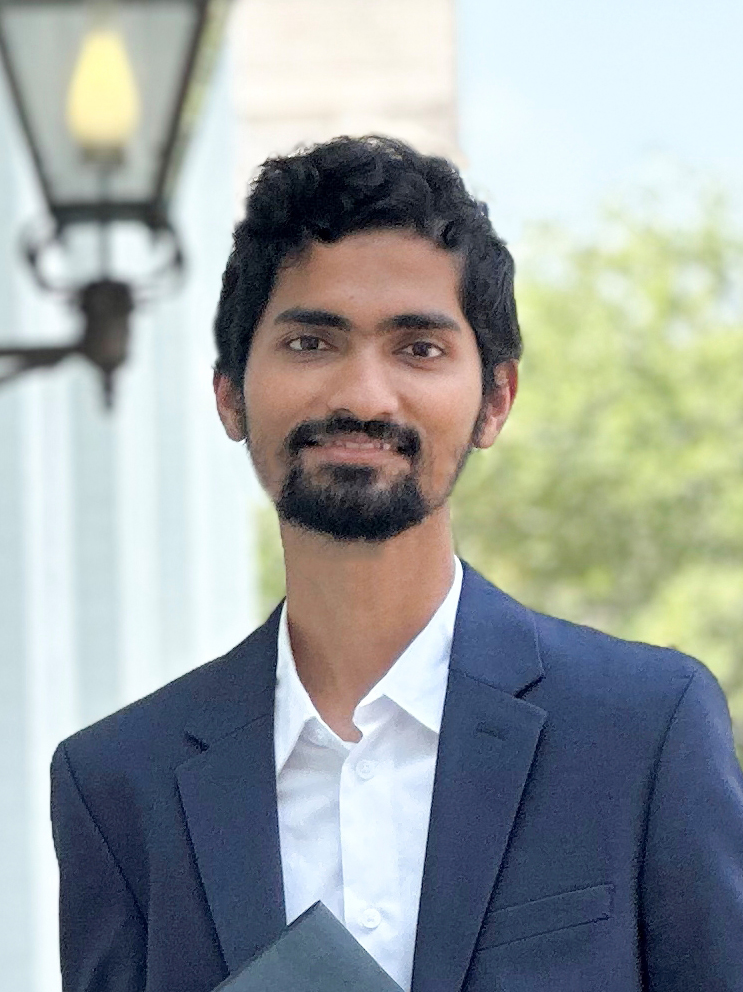
WHAT’S YOUR NAME?
Sai Deherkar
WHAT MOTIVATED YOU TO CHOOSE THE FIELD OF ARCHITECTURE?
From a young age, I found joy in imagining spaces that could inspire and uplift those who inhabit them. As I delved deeper into the field, I became fascinated by the power of architecture to shape communities, promote sustainability, and address societal challenges. The prospect of creating structures that seamlessly blend aesthetics with functionality, while also considering cultural, environmental, and social contexts, deeply resonated with me.
WHAT TYPE OF WORK ARE YOU MOST INTERESTED IN?
As an architectural designer, I am most interested in projects that allow me to blend creativity with functionality and human-centric design principles. I have been working on a diverse range of projects, including residential, educational, healthcare, and public space design. Additionally, I have contributed to township, hospitality, and theme park projects, as well as high-end residential projects during my practice in India.
WHAT HAVE BEEN YOUR BIGGEST CHALLENGES SINCE OBTAINING YOUR ARCHITECTURE DEGREE?
One significant hurdle could be gaining practical experience and finding opportunities to apply theoretical knowledge gained during educational studies. Overcoming these obstacles often requires perseverance, continuous learning, and adapting to the dynamic nature of the industry.
WHAT DID YOU LIKE ABOUT ARCHITECTURE SCHOOL?
I had an opportunity to explore various design concepts, experiment with different techniques and mediums, and develop my design style. Which helped me to achieve my AIA Georgia Design Award 2024 for my thesis project.
ANY CRITICISMS OF THE ARCHITECTURE EDUCATION EXPERIENCE?
Critiques of architectural education often focus on the demanding workload and intense studio culture, which may contribute to student burnout and stress. However, I partially disagree with this view because the rigorous demands of architecture school can effectively prepare individuals for the challenges encountered in real-world projects.
WHAT ARE YOUR PROFESSIONAL GOALS?
My professional goals revolve around continuously expanding my knowledge and skill set, honing my design abilities, and contributing to impactful projects that positively influence communities and the built environment. I aim to collaborate with diverse firms, who embrace innovative technologies and sustainable practices, and strive for design excellence while maintaining a client-centered approach.
WHO DO YOU CONSIDER TO BE SOME OF YOUR FAVORITE ARCHITECTS?
Frank Lloyd Wright for his organic architecture style and iconic buildings. Zaha Hadid for her futuristic and avant-garde designs. Bjarke Ingels for his innovative and sustainable designs that blend pragmatism with bold conceptual ideas.
DO YOU HAVE A FAVORITE BUILDING OR CITY?
I have a fondness for New York, particularly the Manhattan area. When it comes to buildings in NYC, I admire The Shed, Little Island at Pier 55, and the 56 Leonard Street building. Additionally, the Cleveland Clinic Lou Ruvo Center in Las Vegas holds a special place as one of my favorites.
WHAT DO YOU HOPE TO GET OUT OF YOUR AIA BROOKLYN CHAPTER MEMBERSHIP?
Through participation in events and access to resources, as a member I am looking to enhance my skills, build connections, and contribute to the advancement of architecture in the Brooklyn community.


